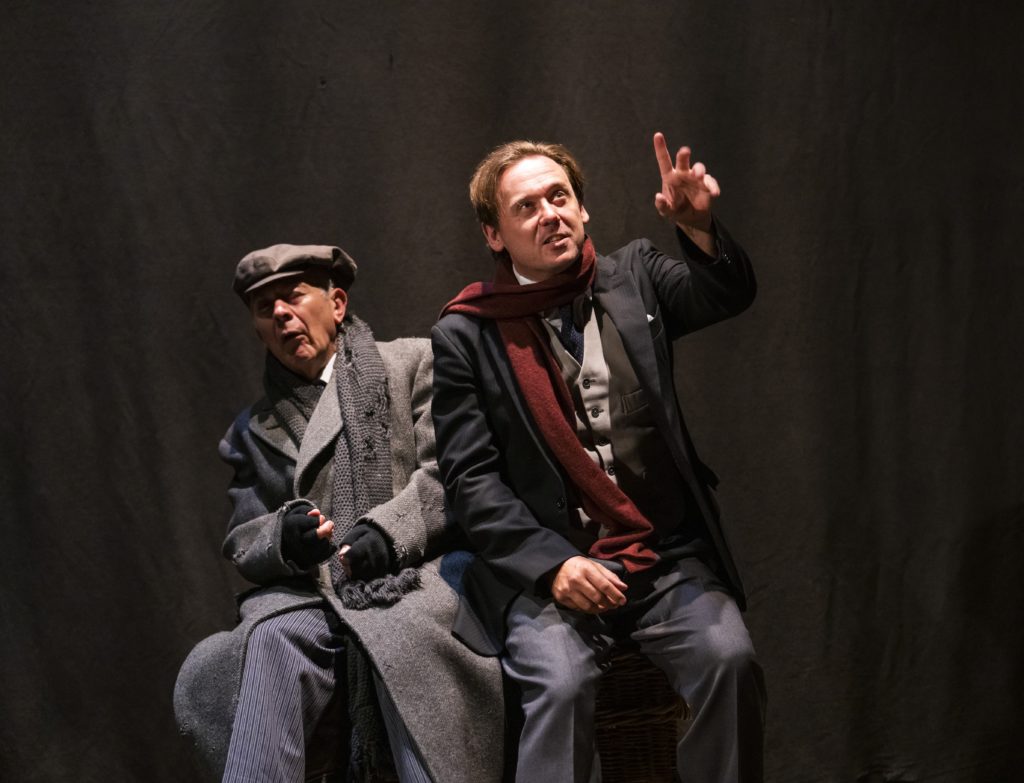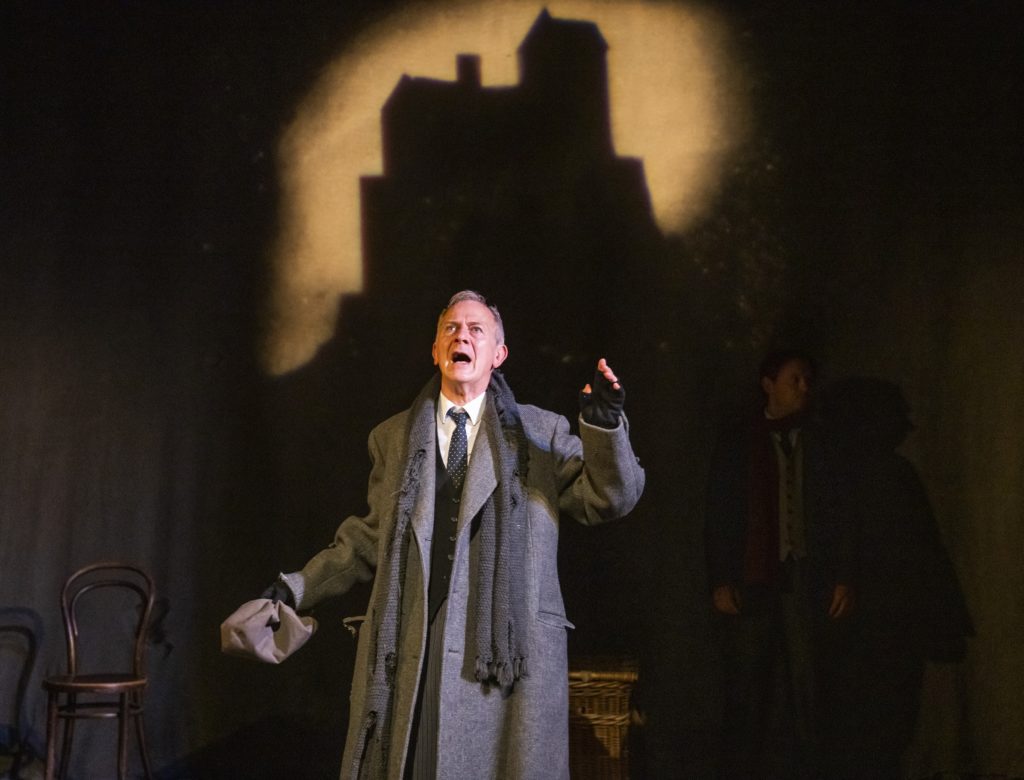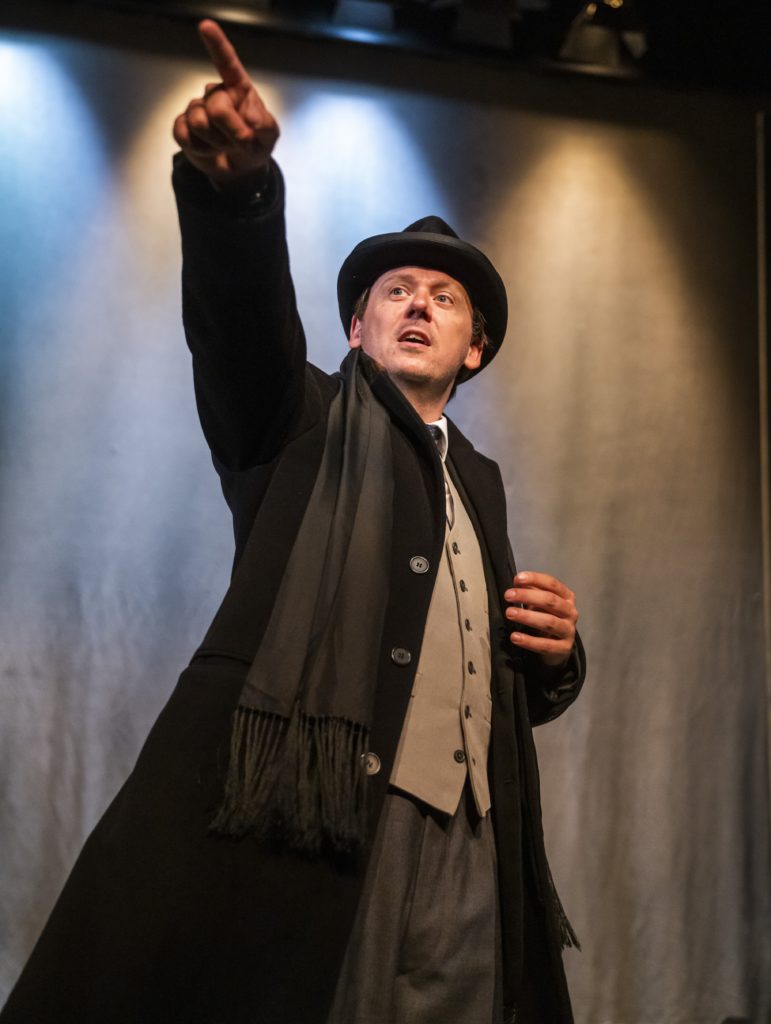
AFTER 547 barren nights, the Grand Opera House, York, reopened on Monday as a ghost story blew away the cobwebs of pandemic-enforced closure at last.
Jennet Humphrey, the “Woman” in the title of The Woman In Black, has a habit of returning to this already crowded city of ghosts on regular occasions, such is the abiding popularity of Stephen Mallatratt’s stage adaptation that began life at the Stephen Joseph Theatre in novelist Susan Hill’s home town of Scarborough in December 1987.
From that premiere, Robin Herford is still directing the award-garlanded fright-night and Michael Holt’s brilliantly atmospheric set is still adding to the chill factor with its clever use of gauze, a shadowy stairwell, passages, a mysteriously locked door and the faded grandeur of a disused theatre.
No matter how often you see the show, Rod Mead’s original sound design, now realised on tour by Sebastian Frost, unfailingly will tantalise, taunt, tease and terrify you. Every time!
Likewise, cast members Robert Goodale and Antony Eden are back in Black, albeit working in partnership for the first time on this revived tour of Mallatratt’s two-hander. Goodale was in the company for the last York visit, in November 2019, at the Theatre Royal, one of myriad old haunts for Eden too, who played there in February-March 2013 en route to notching up more than 1,000 performances.
Familiar faces were in the dress circle too. Not the Grand Opera House’s resident ghost, but the ghosts of Theatre Royal pantomimes past, now first-night guests in their new home, as Berwick Kaler, David Leonard, Martin Barrass, Suzy Cooper and AJ Powell gathered ahead of this winter’s Dick Turpin Rides Again.

First, however, it was time for The Woman In Black’s pony and trap to be ridden again. I say ‘pony and trap’, but it is in fact a wicker trunk. Goodale’s Arthur Kipps, the haunted old solicitor seeking to exorcise the fear that has filled his soul for more than 50 years, looks puzzled.
Use your imagination, advises Eden’s now not-so-young Actor, employed by Kipps to help him turn his rambling book of notes into…well, don’t call it a performance, he says. “I’m not Olivier.”
However, “for my health, for reason”, his story must be told. “I cannot bear the burden any longer,” he says desperate to put his stultifying obsession to bed, to find a peace of mind at last, to end the curse on his family.
At this point, as Kipps and the Actor meet in a dusty old theatre, the tone is lightly humorous, Kipps’ lack of acting talent and sense of drama amusingly apparent; the Actor, sceptical and cocky.
And yet, as if the stage were made of quicksand, we are drawn into what becomes a celebration of the possibilities of theatre and the craft of acting, as much as a superbly executed, drip-drip telling of a ghost story.
In Mallatratt’s play within a play, the drama within takes over from the act of making it. Gradually, by now taking Kipps gravely seriously, Eden’s Actor becomes the young Kipps; Goodale’s stage novice Kipps becomes everyone else, from a convivial hotel manager to a taciturn pony-and-trap driver and an old lawyer, hollowed out by past encounters with the spectral woman in a black cape with a wasted face.

All the while, in his narrator’s role, old Kipps grows ever more paralysed by resurgent fears as the story unfolds of his ill-fated errand as a young solicitor to the haunted Eel Marsh House: an isolated place forever at odds with its wretched self.
The Woman In Black is old-fashioned, storytelling theatre-making, where not only Kipps, but we too, must engage our imaginations, as Herford eschews high-tech special effects. For example, Spider, a dog, is conjured simply with a click of a finger, a push of a stick, a hand stroke in mid-air, with no need for the distracting presence of a real mutt or puppet.
The terrifying theatrical re-enactment is rendered with only two chairs, a trunk of papers, a hanging rail of costume props, dust sheets over the stage apron and a frayed theatre curtain.
Then add smoke to create a disorientating murk that spreads over the auditorium, transforming the stalls into the eerie marshlands, allied to the restless, intrusive sound effects that thrive on surprise and sudden bursts of noise, from horse’s hooves to piercing screams. All the while, in Kevin Sleep’s lighting design, shadows and darkness wrestle with light for dominance, guaranteeing a sleepless night.
After month after month of silence, the Grand Opera House was being reawakened from its slumber with gasps, shrieks and nervous audience laughter, and we loved it. Goodale and Eden, wonderfully in control of delivering a storyline that is spinning beyond control, maybe forever, clearly love it too.
The Woman In Black will not be vanishing any time soon; the empty rocking chair will keep on rocking to big audiences, newcomers and veteran devotees alike.
Review by Charles Hutchinson
